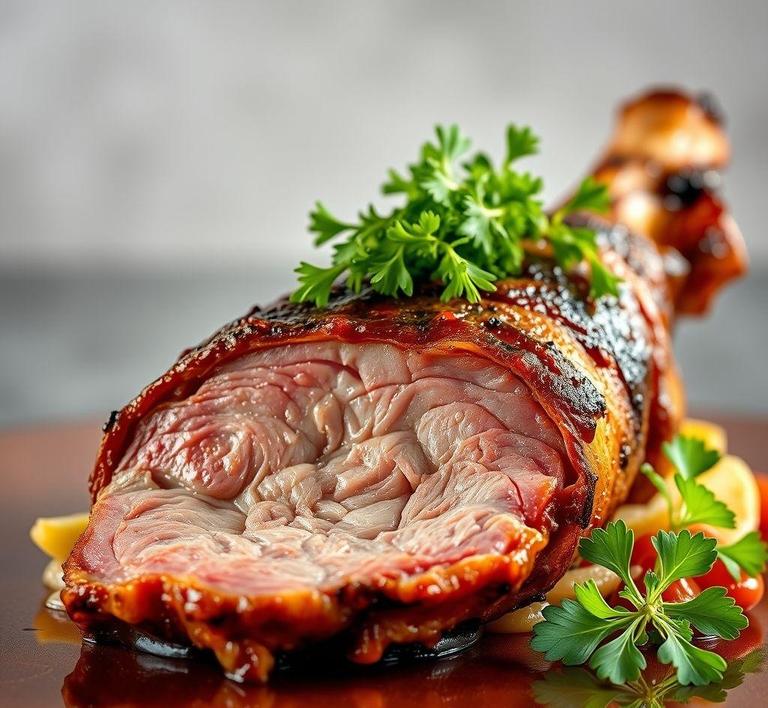Refreezing pork is a topic that often raises questions, especially when it comes to food safety and maintaining the best quality. While it’s generally safe to refreeze pork if it’s been thawed in the fridge, the texture and flavor can suffer if it’s thawed at room temperature or left out for too long. In this guide, we’ll walk you through the best practices for refreezing pork, including how to handle it properly to keep it safe and tasty for future meals. Whether you’re trying to manage leftovers or prepare for a meal later, understanding the dos and don’ts of refreezing pork can save you time, money, and help you avoid unnecessary waste.
Can You Refreeze Pork?

Refreezing pork is a topic that often generates confusion, with many home cooks wondering whether it’s safe or advisable. The general consensus among food safety experts is that you can refreeze pork, but there are several important conditions to consider. Refreezing pork isn’t inherently dangerous, but it all comes down to how it was handled before and after its initial freezing.
When pork is frozen, the cold temperatures slow down bacterial growth, making it safe for storage. However, once pork is thawed, it enters a more vulnerable stage in terms of bacterial activity. If pork was thawed in the fridge, it’s generally safe to refreeze as long as it hasn’t been left out for more than 2 hours at room temperature (or 1 hour in warmer conditions). The key point here is that refreezing meat that has been thawed at room temperature increases the risk of bacteria multiplying, which could lead to foodborne illness.
The type of pork also matters-whether it’s a cut of meat like pork chops, ground pork, or leftovers from a cooked meal. Raw pork and cooked pork can both be refrozen, but the quality may degrade with each freeze-thaw cycle.
How To Refreeze Pork?
Refreezing pork requires a bit more care to ensure that you maintain its safety and quality. Here’s how to do it properly:
- Thawing First: If you’re starting with frozen pork, ensure it has been thawed safely in the fridge. Never thaw pork on the countertop, as it can warm up to unsafe temperatures, fostering bacterial growth. It’s best to plan ahead and allow pork to thaw slowly in the refrigerator, which keeps it in the safe temperature zone (below 40°F or 4°C).
- Inspect Pork Quality: Once thawed, inspect the pork for any signs of spoilage, such as an off smell, discoloration, or slimy texture. If the pork seems off, it’s safer to discard it rather than refreeze.
- Packaging for Refreezing: If the pork passed the thaw test and you’re ready to refreeze, you need to package it properly. Use airtight packaging like vacuum-sealed bags or heavy-duty plastic wrap to prevent freezer burn, which occurs when air gets to the meat and causes it to dry out. Properly packaged pork can last for several months in the freezer.
- Freezing Process: Place the pork in the coldest part of the freezer to freeze it as quickly as possible. The faster the freezing process, the better the quality will remain. Make sure to label the packaging with the date so you can track how long it has been in storage.
- Thawing Again: When it’s time to use your refrozen pork, make sure you thaw it safely. The best method is to place it in the fridge for a day or two. You can also use the defrost function on your microwave for quicker results, but never thaw pork on the countertop.
Quality Impact
While it’s safe to refreeze pork as long as it’s done correctly, the quality of the meat will likely suffer with each cycle of freezing and thawing. The impact on quality is influenced by a few factors:
- Texture: Pork loses moisture with each freezing cycle, which can result in a dry, rubbery texture. This is especially noticeable in cuts like pork chops or tenderloin. The more times you freeze and thaw the meat, the more the cells break down, leading to a less pleasant eating experience. Ground pork, in particular, can become crumbly or mushy after being refrozen.
- Flavor: Freezing meat can cause the breakdown of certain compounds, slightly altering the flavor. Repeated freezing, especially if there’s air exposure, can make the pork taste bland or even develop a stale flavor, especially in lean cuts. The loss of fat, which freezes and thaws poorly, can also affect the richness of the meat.
- Nutrient Loss: Each freeze-thaw cycle may contribute to some nutrient loss. While freezing is an excellent way to preserve most of pork’s nutritional value (proteins, fats, vitamins, and minerals), the breakdown of cell walls during thawing can lead to some loss in vitamins, particularly those sensitive to temperature changes like Vitamin B.
- Freezer Burn: This is a common issue when pork is refrozen. It occurs when the meat is exposed to air, which can dry out parts of the surface, leading to grayish or leathery patches. These patches are safe to eat but have an unpleasant texture and flavor. The best way to avoid freezer burn is to ensure the pork is tightly wrapped and sealed before being stored.
Refreezing pork is safe as long as proper food handling practices are followed, such as ensuring the meat has been thawed in the fridge, not at room temperature. However, the quality of the pork can be impacted by the freeze-thaw process. Texture, flavor, and nutrient content may degrade, especially if the pork is repeatedly frozen and thawed.
For optimal results, limit how often you refreeze pork, and aim to use it within a few months of its initial freezing. Always store it in air-tight packaging to prevent freezer burn and thaw it carefully to avoid any risk of bacterial growth. If you’re using refrozen pork in cooked dishes, the loss in texture and flavor is less noticeable, but when it comes to grilling or pan-frying pork cuts, the difference will be more pronounced.
Is It Safe To Refreeze Pork?
Refreezing pork, like any other meat, is a common dilemma for home cooks and food enthusiasts. The answer to whether it’s safe to refreeze pork depends on several factors, particularly the conditions under which it was thawed and handled.
Pork, just like other meats, can be refrozen, but only if it has been thawed safely and hasn’t been out of the refrigerator for too long. When you freeze pork initially, the process locks in its freshness and prevents bacterial growth. However, once pork is thawed, its structure changes. Moisture escapes, which can affect its texture and quality when refrozen. This loss of moisture can lead to dry, tough meat upon reheating.
The general rule of thumb for safe refreezing is: if the pork has been thawed in the refrigerator and not left at room temperature for more than two hours, it can be refrozen without significant safety risks. This ensures that the meat has stayed at a safe temperature (below 40°F or 4°C) where harmful bacteria cannot proliferate.
However, the refreezing process can diminish the quality. For example, pork chops or roasts might lose their tenderness, while ground pork could become crumbly and dry after refreezing. This degradation in texture is why many choose to cook the pork before refreezing, as cooking the meat eliminates potential bacteria and locks in moisture.
Signs That Pork Should Not Be Refrozen
Knowing when pork is no longer safe to refreeze is crucial for both health and taste. Several signs can indicate that pork should not be refrozen:
- Foul Odor: Fresh pork should have a mild, slightly sweet smell. If it has an unpleasant, sour, or rotten odor, it’s a clear indication that the meat has spoiled. Even after freezing, an off smell is a sign of bacterial growth, and the pork should not be refrozen or consumed.
- Discoloration: Pork that has turned an abnormal color, such as grayish or greenish hues, is a red flag. Although slight discoloration from freezing or thawing is normal, dramatic color changes usually point to spoilage, which can be worsened by the refreezing process.
- Slimy or Sticky Texture: If the surface of the pork feels slimy or tacky to the touch, it’s a sign of bacterial contamination. This texture can develop if the meat has been improperly stored or thawed, especially at room temperature for extended periods.
- Freezer Burn: While freezer burn doesn’t make pork unsafe to eat, it can severely affect its quality. If the pork has dry, leathery patches with discoloration, this is freezer burn. Though not harmful, freezer-burned pork can have off flavors and be very tough after cooking, making it unappetizing.
- Thawing at Room Temperature: If the pork was thawed at room temperature (for more than two hours), the chances of harmful bacteria growth are high. In this case, the pork should be discarded, as refreezing it will only worsen the situation.
Common Refreezing Mistakes
Refreezing pork is not as simple as tossing it back into the freezer. There are several common mistakes people make that can lead to either safety concerns or poor-quality pork upon defrosting. Here are some of the biggest errors:
- Thawing at Room Temperature: One of the most common and dangerous mistakes is leaving pork out at room temperature to thaw. Bacteria multiply rapidly at temperatures above 40°F (4°C), and pork should never be thawed on the countertop. The safest way is to thaw pork in the refrigerator, or, if you’re in a hurry, you can use the microwave or cold water bath method.
- Refreezing Multiple Times: Refreezing pork over and over again can significantly diminish both its safety and quality. Each time meat is thawed, bacteria have a chance to multiply (even if they are slowed down by the freezer). Refreezing it after thawing can make the pork increasingly prone to spoilage and compromise its flavor, texture, and moisture.
- Improper Packaging: Pork should be tightly wrapped in plastic wrap or foil, and then placed in an airtight container or freezer bag to prevent exposure to air. Exposure to air can cause freezer burn, and improper packaging can lead to the meat absorbing odors from other foods in the freezer.
- Refreezing Raw Pork That Was Cooked: Some people mistakenly assume that cooking pork before refreezing will eliminate the risks of bacterial growth. While cooking meat can kill bacteria, the process of freezing and thawing cooked pork can still result in significant texture changes, making it less appetizing.
- Not Labeling: It’s easy to forget how long something has been in the freezer, and pork can lose its optimal freshness over time. Not labeling the date of freezing can result in consuming pork that has been in the freezer for too long, leading to deteriorating flavor and texture. Always label and date your pork before freezing.
Tips And Tricks
To ensure that your pork remains safe to eat and maintains the best quality when refrozen, here are a few helpful tips and tricks:
- Cook Before Refreezing: If you’ve thawed pork and don’t think you’ll be able to eat it in time, cooking it before refreezing can actually preserve its flavor and texture much better than refreezing raw pork. This can also reduce the risk of bacterial growth, as cooking eliminates any bacteria present.
- Use Freezer Bags or Vacuum Sealers: If you plan to freeze pork for an extended period, vacuum sealing is the best method for preserving both the safety and quality of the meat. Vacuum-sealed bags prevent air exposure and minimize freezer burn, keeping your pork fresher longer.
- Thaw Safely: To minimize risks, always thaw pork in the refrigerator, not on the countertop. If you’re in a rush, use the microwave’s defrost setting or place the pork in a sealed bag and submerge it in cold water, changing the water every 30 minutes.
- Don’t Refreeze Small Portions: If you’ve thawed a large portion of pork, try to divide it into smaller portions before freezing so that you can defrost only what you need each time. This prevents repeated thawing and refreezing of the entire batch.
- Use Within Three to Four Months: Even though freezing can preserve pork for long periods, it’s best to use frozen pork within three to four months. After that, the quality may degrade due to freezer burn or loss of moisture.
Conclusion
Refreezing pork is a practical solution in many cases, but it’s important to handle it with care. Ensuring that the pork has been properly thawed and has remained at a safe temperature is key to keeping it both safe and delicious. While refreezing pork is generally safe if done under the right conditions, it can affect the texture and flavor of the meat. To get the best results, avoid common refreezing mistakes and take the necessary precautions-especially when it comes to packaging, thawing, and storage.
Ultimately, while it’s possible to refreeze pork, it’s best to only do so when necessary and when you’re confident that the meat hasn’t been mishandled or exposed to unsafe conditions. By following these guidelines, you can enjoy pork without worrying about safety or quality.

